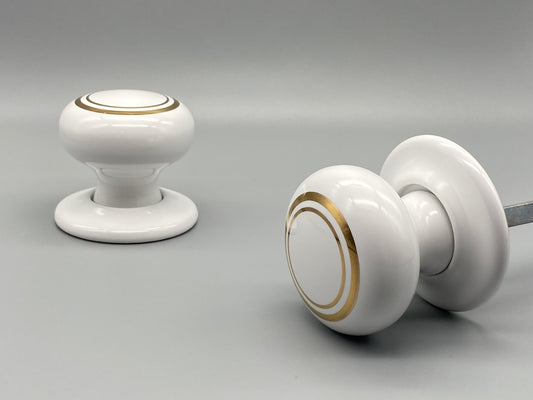Chemical Suction Hose and PVC Layflat Hose: Understanding Their Applications and Advantages
Introduction
In the world of fluid handling and transport, hoses play a critical role. They facilitate the movement of liquids and gases across various industries, from agriculture to manufacturing, and even in chemical processing plants. Two essential types of hoses used for different applications are Chemical Suction Hoses and PVC Layflat Hoses. In this blog, we’ll explore what sets these hoses apart, their applications, and the advantages they offer.
- Chemical Suction Hose
Chemical suction hoses are designed to transport a wide range of chemicals, acids, and other aggressive liquids safely. These hoses are typically constructed from a variety of materials, including rubber and thermoplastics, to ensure compatibility with the specific chemicals being transferred. Here are some key features and applications of chemical suction hoses:
Features:
- Chemical-resistant materials: These hoses are engineered to withstand the corrosive nature of various chemicals, making them an ideal choice for chemical processing plants.
- Reinforced construction: Chemical suction hoses often have a reinforced design to handle both positive and negative pressure, ensuring they can withstand suction and discharge operations.
Applications:
- Chemical transfer: These hoses are used for the safe transfer of acids, bases, solvents, and other corrosive chemicals.
- Agriculture: They are employed in agriculture for the irrigation and distribution of fertilizers and pesticides.
- Industrial settings: Chemical Suction Hose find applications in industrial manufacturing processes where chemicals are used or transported.
Advantages:
- Chemical resistance: The primary advantage of chemical suction hoses is their resistance to corrosive chemicals. They can handle a wide range of aggressive substances without compromising the hose’s integrity.
- Versatility: These hoses are versatile and can be used in a variety of industries, making them a cost-effective solution for chemical transport needs.
- PVC Layflat Hose
PVC Layflat hoses are known for their flexibility and lightweight construction. They are particularly popular in agricultural and construction settings, where the temporary or long-term transport of water and other liquids is required. Let’s delve into their features, applications, and advantages:
Features:
- Lightweight: Pvc Layflat Hose are easy to handle and transport due to their lightweight PVC construction.
- Foldable and space-saving: They can be easily folded and stored when not in use, saving storage space.
- Smooth bore: The inner surface of PVC Layflat hoses is typically smooth, which allows for efficient fluid flow.
- Resistant to kinking: These hoses are less prone to kinking or tangling, making them user-friendly.
Applications:
- Agriculture: PVC Layflat hoses are widely used for irrigation and water distribution in agriculture. Their flexibility and ease of use make them a popular choice for farmers.
- Construction: They are used for dewatering, temporary water supply, and drainage on construction sites.
- Emergency services: These hoses are suitable for firefighting and emergency water supply.
Advantages:
- Ease of use: PVC Layflat hoses are easy to handle, install, and maintain, making them an attractive choice for applications where mobility is crucial.
- Cost-effective: They are generally more cost-effective compared to some other types of hoses, making them a budget-friendly option for various industries.
Conclusion
Chemical Suction Hoses and PVC Layflat Hoses are essential tools in the world of fluid transport, each serving specific industries and applications. Chemical suction hoses are designed to handle corrosive chemicals and find use in chemical processing and agriculture, while PVC Layflat hoses are lightweight, flexible, and popular in agriculture and construction.
Understanding the distinct features, applications, and advantages of these hoses is crucial for selecting the right tool for the job, ensuring safe and efficient fluid transport across a wide range of industries
- SHARES

Ashmawi Sami has a Bachelor degree in Travel and Tourism Management from the University of Minnesota. He has his own travel vlogging channel. Besides being a fantastic yoga instructor he has travelled to 9 countries and planning his next trip soon. As the father of 3 dogs, he is well-trained in parenting, crowd control, and crisis situations.
ABOUT ME

Gillian is a freelance blogger, student, and full-time traveler. Each day she spends her time exploring something exciting to help people find the information they need while travelling to a new destination. Whether it be the place to enjoy holidays, or a spot to throw a party or hidden gems that you must visit in the city.
ALL CATEGORIES
- Adventure (13)
- Automotive (8)
- Business (662)
- Education (13)
- Event (4)
- Health (285)
- Insurance (11)
- Lifestyle (12)
- News (1)
- Real Estate (19)
- Shopping (26)
- Technology (20)
- Travel (6)

JOIN US TODAY
POPULAR POST
January 27, 2021 -
Adventure Travel For The Audacious Spirit
January 27, 2021 -
Small Business Loans for Women
January 27, 2021 -
Adventure Tours in Vanuatu
RECENT POST
July 20, 2024 -
Discovering Kelowna’s Best Boat Rental and Yacht Charter Services
Nestled in the heart of British Columbia's Okanagan...
July 20, 2024 -
What are the advantages of the best infant car seat stroller combo?
When it comes to convenience and safety for...
July 19, 2024 -
Transforming Your Space with Timeless Brass Hardware
Brass hardware has long been celebrated for...
July 19, 2024 -
The Ultimate Guide to Curtain Making Accessories: Transform Your Space with the Right Tools
Creating the perfect set of curtains involves more...

















